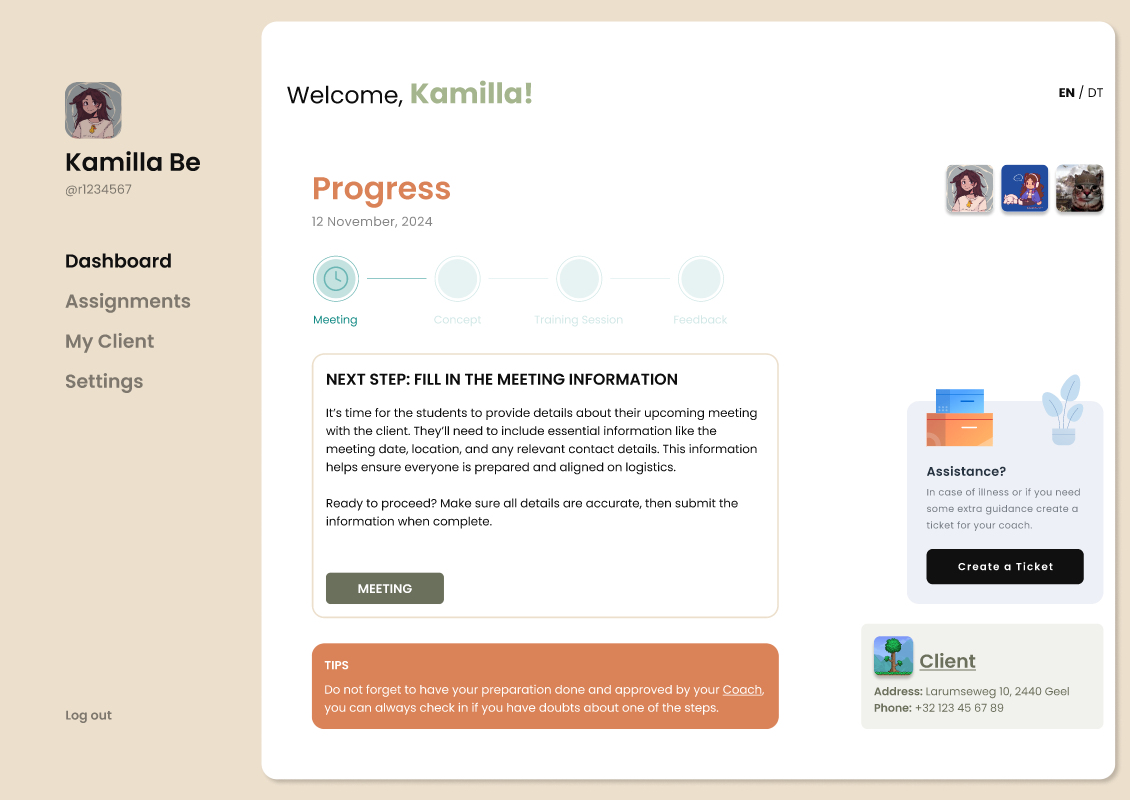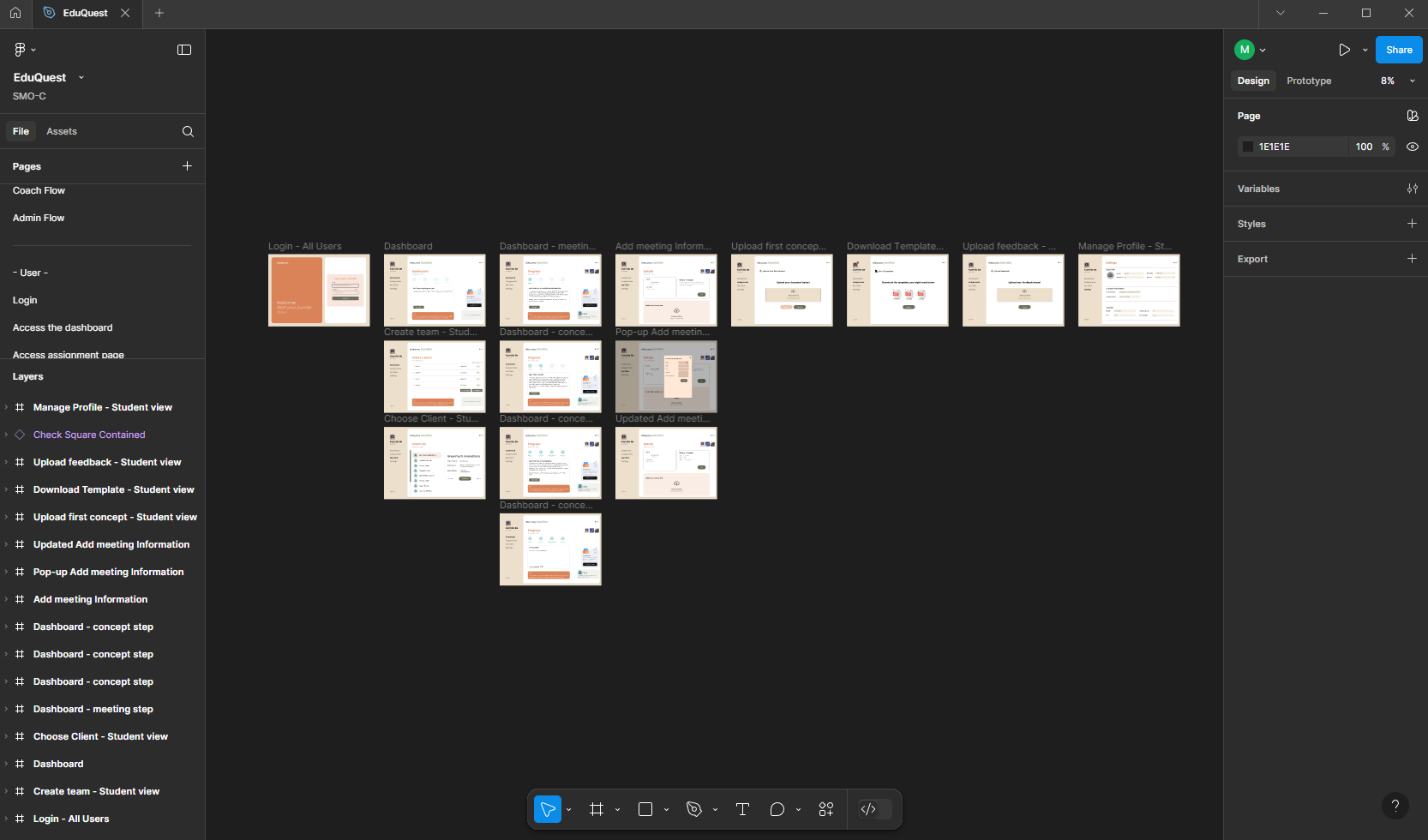EduQuest is a web-based platform developed to enhance collaboration and project management within academic environments. Designed for students, coaches, clients, and administrators, the platform streamlines communication, enables real-world project tracking, and ensures seamless coordination across all roles. Built with scalability and user experience in mind, EduQuest aims to solve the common challenges of managing educational projects in team-based, multi-stakeholder settings.

If you want to check the full prototype and explore different user roles, click here .
I took the lead in designing the Figma prototype due to my previous experience in UI/UX. I also supported the team in defining both functional and non-functional requirements, and helped structure the overall analysis. My design input was crucial in aligning the user interface with the needs of students, coaches, and administrators alike.
Our process began with a clear breakdown of functional requirements using a use case diagram, followed by a MoSCoW analysis to prioritize key features. From there, we developed a high-fidelity Figma prototype reflecting user interactions based on the roles. The prototype helped visualize navigation flows and validated the user experience before development.
Communication within the group was a key challenge, as aligning expectations and sharing updates consistently was sometimes difficult. Additionally, adapting to a more structured Figma workflow was initially confusing, since I was used to a more free-form approach. Over time, I adjusted and learned to better align my process with the team's structure and tools.

The final prototype and documentation were very well received by the client and instructor. The system was praised for its clarity, logical structure, and its adaptability to real educational needs. The use case-driven structure and clean interface design helped communicate the platform’s full potential.
I really enjoyed working on this project, especially the opportunity to focus more deeply on UI design while also contributing to system logic. Thinking through the structure of a real-world platform that will be implemented gave me a greater appreciation for the balance between design, requirements, and user experience.